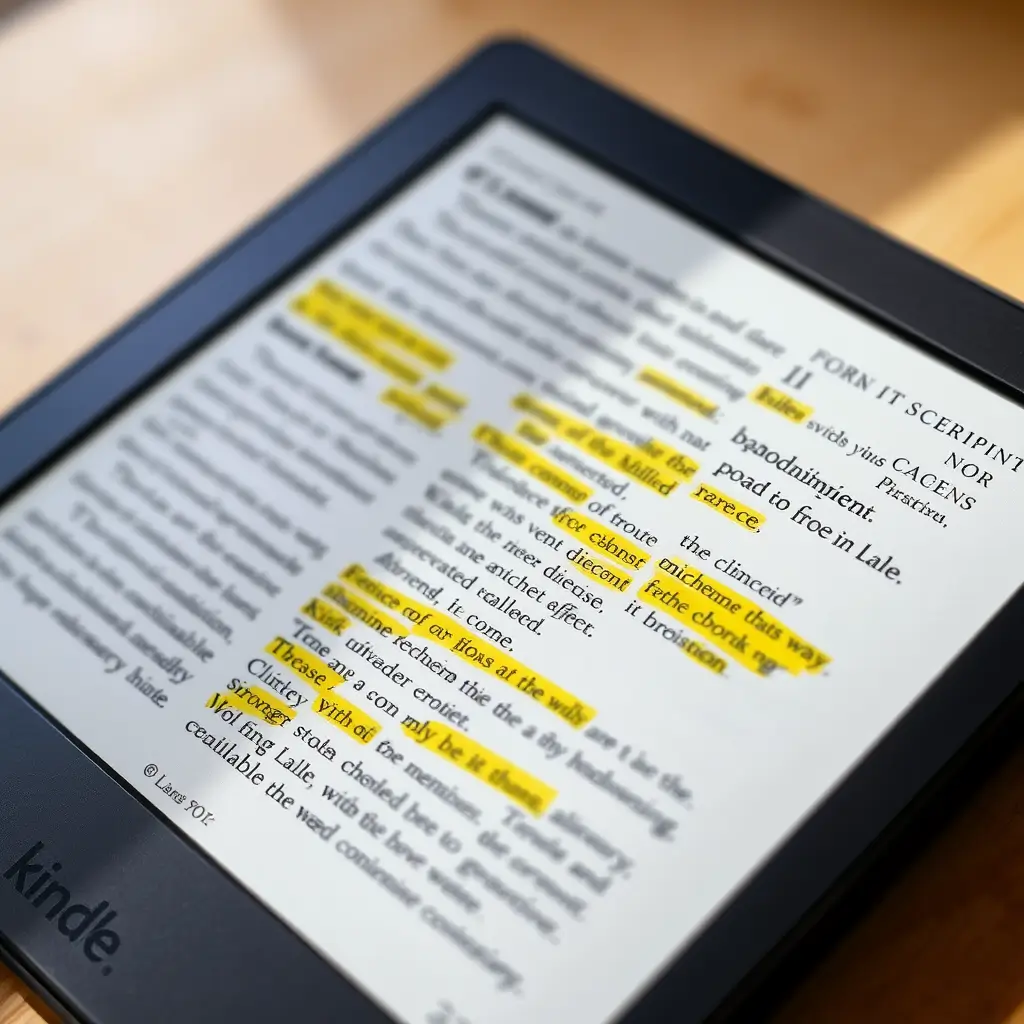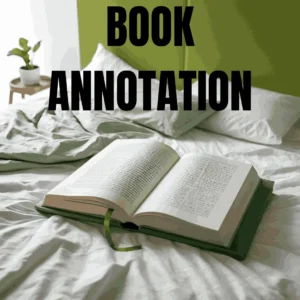Introduction
Annotating a novel isn’t just for students or academics—it’s a fun, personal way to deepen your connection with the books you love. If you’ve ever felt the urge to mark a favorite passage, jot down a thought, or explore themes as you read, then learning how to annotate novels effectively can take your reading experience to a whole new level. In this post, I’ll share practical annotation techniques, tools, and personal insights that make the process both enjoyable and useful.
Let’s explore how you can transform your novel reading experience with simple yet effective annotation techniques!
1.Why Annotate a Novel?
Before we dive into techniques, it’s important to understand why annotating novels can be beneficial, whether you’re reading for pleasure or study.
- Deepen Your Understanding: Annotations help you engage more actively with the text, revealing nuances in plot, character development, and themes.
- Record Your Thoughts: Marking memorable quotes or jotting down reflections allows you to revisit your thoughts whenever you re-read.
- Improve Critical Thinking: By questioning or noting patterns, you build stronger analytical skills.
- Personalize Your Experience: Annotation makes the novel uniquely yours, documenting your evolving perspective on the story.
2. Choosing the Right Tools for Annotation

When it comes to annotating a novel, there are a variety of tools you can use, depending on your reading style. Here are some effective options:
- Highlighters and Pens: Traditional yet effective. Color-coding your highlights can help you differentiate themes, character traits, or important quotes.
- Sticky Notes: For readers who don’t like writing in books, sticky notes are a great alternative.
- Digital Annotation: If you’re reading e-books, tools like Kindle’s note-taking feature can be invaluable for digital annotations.
My Experience: Personally, I love using a mix of highlighters and sticky notes when reading novels. I reserve different colors for specific purposes, such as yellow for significant themes and blue for favorite quotes. And if you are new in Annotation then you can read this beginner guide for annotation.
3. Key Annotation Techniques for Novels
Now let’s get into some tried-and-true annotation techniques that work especially well for novels.
Highlight Key Passages
When a particular passage resonates with you—whether because of its beauty, emotional impact, or significance in the plot—highlight it. Don’t overdo it; focus on passages that stand out.
Make Margin Notes
Write brief notes in the margins to record thoughts, questions, or insights. You might ask why a character made a certain decision or comment on how a plot twist surprised you.
Summarize Each Chapter
At the end of each chapter, write a brief summary in your own words. This helps you keep track of plot developments, especially in longer novels.
Good annotation isn’t just about answering questions but also about asking them. What motivates a character? How does this scene connect with the overall theme? By raising questions, you actively engage with the text.
4. Creative Annotation for Fun

Annotating novels can also be a creative, fun activity, not just an academic task.
- Doodles and Drawings: Some readers like to draw small images or symbols in the margins that represent how they feel about a scene.
- Personal Reflections: Use the margins to reflect on how the story relates to your life or past experiences.
My Experience: I often find myself writing personal reflections in the margins, especially when reading a novel that evokes strong emotions or nostalgia. This adds a layer of personal connection that I enjoy revisiting later.
5. How to Avoid Over-Annotating
It’s easy to get carried away with annotations, especially if you’re an avid reader. But less is often more.
- Be Selective: Don’t feel the need to comment on every paragraph. Focus on areas where your reaction is strongest.
- Avoid Rewriting the Novel: Use brief notes rather than long paragraphs to keep your annotations clear and concise.
6. Best Practices for Digital Annotation

For those who prefer reading digitally, here’s how you can annotate effectively:
- Use Highlights and Notes Features: Most e-readers, like Kindle, offer excellent highlighting and note-taking features.
- Organize by Color: If your digital platform allows it, use different colors for themes, characters, and important plot points.
- Sync Across Devices: Digital annotations are stored in the cloud, allowing you to access them from multiple devices.
7. Review and Reflect on Your Annotations
One of the most rewarding aspects of annotating a novel is the ability to look back and reflect on your notes. After finishing a novel, take some time to revisit your annotations:
- Reflect on Key Themes: Which themes stood out to you the most, and how did they evolve throughout the novel?
- Notice Character Growth: Use your notes to track how characters changed over the course of the book.
- Draw Connections: Identify any connections between different parts of the book that you may not have noticed on your first read.
8. Recommended Novels for Annotation
If you’re looking for some novels that are especially rewarding to annotate, here are a few recommendations:
- Pride and Prejudice by Jane Austen: A classic with rich themes and character development.
- 1984 by George Orwell: Perfect for readers who love to explore complex political and social themes.
- The Great Gatsby by F. Scott Fitzgerald: A novel filled with symbolism and historical significance.
Conclusion
Annotating a novel can transform your reading experience, making it richer and more interactive. Whether you’re highlighting passages, making notes in the margins, or reflecting on themes, you’re engaging more deeply with the text. The process not only enhances your understanding but also turns each novel into a personal journey. Remember, there’s no right or wrong way to annotate—find what works best for you and enjoy the process.



